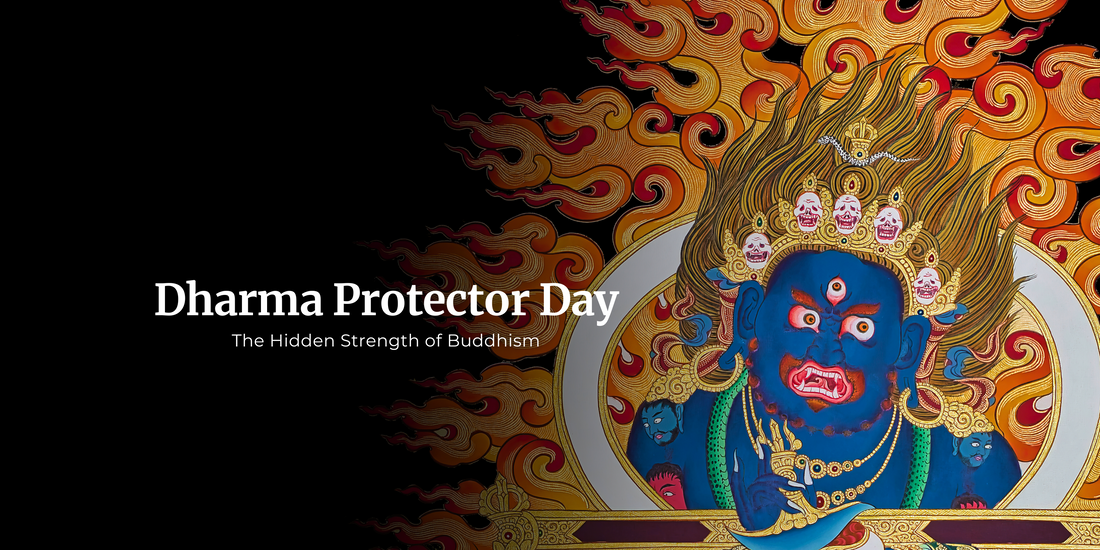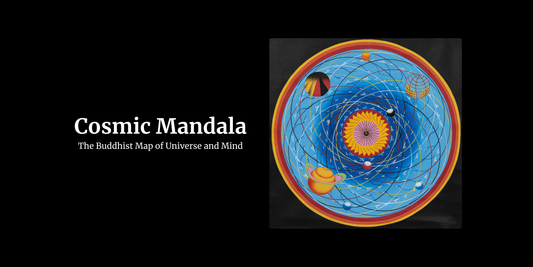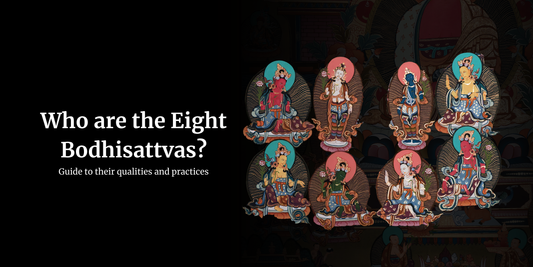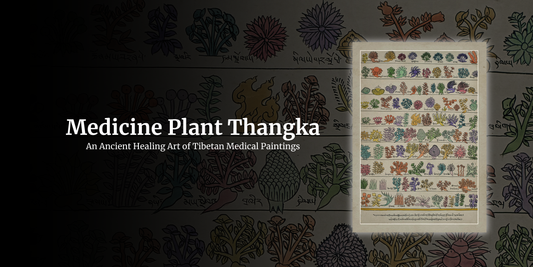- Buddhas Art of Healing
- Buddhism Blog | Teachings, Philosophy & Mindful Living
- Dharma Protector Day: The Hidden Strength of Buddhism

Dharma Protector Day: The Hidden Strength of Buddhism
Have you ever wondered who protects the path of wisdom when obstacles arise? Dharma Protector Day is a time dedicated to honoring those fierce yet compassionate guardians, the Dharmapalas.
These protectors are not just mythical figures; they symbolize the strength we need to overcome fear, negativity, and inner struggles that block our spiritual journey.
By remembering them, offering prayers, and engaging in practice, we align ourselves with their energy of courage and unwavering protection.
Ready to uncover the hidden power behind Dharma Protector Day? Let’s dive in.
What is Dharma Protector Day?
Dharma Protector Day, also known as Dharmapala Day, is one of the most important monthly celebrations in Tibetan Buddhism. It comes on the 29th day of every lunar month, the day before the new moon (Amavasya).
On this day, practitioners perform rituals and pray to the religious leaders (Dharmapalas), wrathful yet compassionate deities and enlightened beings. They are tasked to protect the Buddha’s teachings (Dharma) and those who are walking on its path.
The word "Dharmapala" comes from Sanskrit:
- Dharma: the teachings of the Buddha, the universal law of truth
- Pala: protector, guard, or defender
Thus, Dharmapalas are the guardians of truth. Their fierce forms symbolize the uncompromising protection of wisdom and compassion from obstacles, ignorance, and negativity.
Why is Dharma Protector Day Celebrated?
The day emerges out of recognition that the path of Dharma is not always smooth. Practitioners face both external obstacles (illness, misfortune, disharmony) and internal obstacles (ignorance, attachment, doubt, fear).
Dharma protector practices are a way of:
- Seeking support from enlightened protectors to overcome hindrances.
- Expressing gratitude for the guardianship of the Dharma.
- Purifying negative karma through offerings and confession.
- Maintaining spiritual discipline by aligning one’s practice with the lunar cycles.
It is celebrated because protectors are not abstract mythic figures; they are living forces of compassion in action, ensuring that the Dharma continues to flourish in the world.
The Core Meaning of Dharma Protector Day
At its heart, Dharma Protector Day is not about fear or superstition. It is about:
- Honoring the sacred bond between practitioners and the guardians of truth.
- Identifying the challenges of the spiritual path and calling for conscious support.
- To balance wisdom and compassion with strength and determination.
The wrathful form of the protector symbolizes the transformation of anger and destructive energy. Their motion is not against beings, but against ignorance and against the forces that disrupt spiritual progress.
Who Are the Dharma Protectors?
Dharma Raksha (Dharmapala) is a symbol of the terrible patronage of knowledge and compassion. They may look terrible, but their anger forms are directed not to people but to the forces of ignorance, ego, and negativity that disrupt knowledge.
The four most prestigious religion protectors in Tibetan Buddhism are:
Mahakala: The Fierce Compassionate Protector
Mahakala is probably the most widely respected among all religious protectors. He is considered to be an angry form of the Bodhisattva of Karuna.
The role of Mahakala is to eliminate spiritual obstacles, protect from harmful effects, and ensure that religion (dharma) continues to flourish.
-
Symbolism: Black body (absorbing negativity), crown of skulls (impermanence), and weapons (cutting through confusion).
- Why He Matters: He is the ultimate guardian of compassion, fierce in appearance but rooted in loving-kindness.
Palden Lhamo: The Wrathful Mother
Palden Lhamo (Śrī Devī) is the only female among the “Eight Great Dharmapalas.” Her story says she vowed to protect Tibet and the Dharma after being tamed and tied with the oath.
-
Symbolism: The saddle of her mule is made of human skin, which symbolizes victory over ignorance. Her blue-black color represents the ultimate truth.
- Why She Matters: Palden Lhamo is particularly distinguished as Tibet’s individual protector and the Dalai Lamas’. She is the symbol of terrible, maternal power that protects dharma from destruction.
Yama: Lord of Death as a Protector
Yama is widely known as the master of death in Indian traditions. In Buddhism, he turns from a terrible deity of the afterlife to a protector of religion. His role is not to punish but to remind the beings of the impermanence and imperative of karma.
In protectors' practices, he looks fierce, holding the “wheel of life” in his fist, symbolizing the cycle of samsara.
-
Symbolism: Bull-headed form, fiery mane, and the Wheel of Life in his hands.
- Why He Matters: He urges practitioners to live mindfully and practice diligently before the arrival of death.
Vajrapani: The Thunderbolt-Wielding Protector
Vajrapani is one of the oldest Buddhist protectors and is counted among the three great Bodhisattvas with Avalokiteshvara (compassion) and Manjushri (wisdom). In his anger form, he is a powerful protector who controls demons and obstacles, clearing the path to enlightenment.
-
Symbolism: The blue body, muscular form, and the thunderbolt weapon are surrounded by flames of wisdom.
- Why He Matters: Vajrapani is the inscription of spiritual strength—the courage and power necessary to remove the external challenges and internal demons on the path.
Together, these protectors remind us that the path of awakening requires both compassion and strength. Mahakala symbolizes wrathful compassion, Palden Lhamo fierce guardianship, Yama the truth of impermanence, and Vajrapani the unstoppable power of enlightened energy.
Their essence is to remove obstacles and protect religion so that the beings can awaken.
What Happens on Dharma Protector Day?
On the 29th day, practitioners—whether monastic or lay—engage in Protector Puja or Sang Sol (incense offerings). Common practices include:
-
Protector Puja (Gonpo Solkha / Mahakala Puja): Prayer and chanting mantras, making offerings such as tea, alcohol, incense, or food to the protectors.
-
Acceptance and Purification: Accepting and purifying the mistake of karma.
-
Fasting or abstinence: To increase clarity and discipline.
- Aspiration prayers: Requesting the protectors to bring harmony and help in religious activity.
These practices are not meant to please angry gods but to awaken the protective forces within and in the world.
Why Does It Matters Today
Even in the modern world, Dharma Protector Day holds immense relevance:
- It provides a monthly rhythm of reflection, protection, and renewal to practitioners.
- Preserves a living link with the lineage protector, ensuring the continuity of religion.
- Reminds us that true safety comes from discipline, practice, and internal change, symbolizing our own awakened strength with protectors.
Dharma Protector Day (Dharmapala Day) is a monthly reminder that the path of awakening requires both compassion and strength. Celebrated on the 29th lunar day, it respects the fierce protectors of the Dharma who guide practitioners through obstacles and protect the teachings.
More than ritual, it is about awakening the inner protector within—our ability to guard our practice, overcome inner demons, and remain steadfast on the path of liberation.

1. What is Dharmapala in Buddhism?
A Dharmapāla is a “protector of the Dharma”—a deity, soul, or enlightened being who defends Buddhist teachings and practitioners from both external and internal forces.
2. Why do Dharma protectors look so wrathful or frightening?
Their fierce appearance is a symbol of invincible compassion and determination. Their imagery is a reminder that the path of wisdom sometimes requires strength and fearlessness.
3. Why is Dharmapala Day always on the 29th lunar day?
The 29th day of the lunar month is traditionally considered to be a time for cleanliness, confession, and preparation before the new moon. This is the ideal time to create offerings and clear obstacles with the support of patrons.
4. Do lay practitioners celebrate Dharma Protector Day, or is it just for monks?
Both monastics and laypeople observe it. While monasteries often hold detailed pujas, lay practitioners can participate through simple offerings, read the protector prayers, or even shed light with mindful intention.
5. Can someone new to Buddhism observe Dharma Protector Day without initiation?
Yes. While some advanced protector practices require empowerment, one can honor Dharma Protector Day by joining a community puja, offering incense, or simply dedicating prayers for the protection of the Dharma and all beings.
Explore our collection of authentic Tibetan Thangkas from the art of Buddha's Art of Healing. Each of our Thangkas has been prepared to inspire peace, clarity, and spiritual connection.
Follow us on Facebook and Instagram to stay updated on Tibetan Buddhist festivals, special days, and more.



